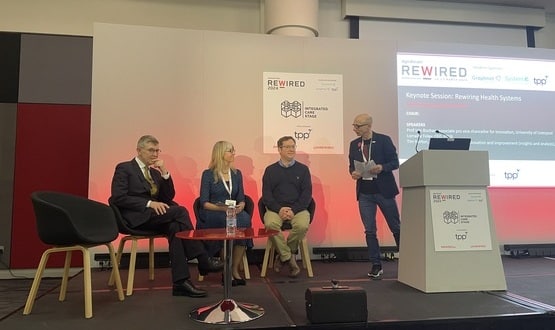Norfolk and Norwich deploy automated Covid-19 staff risk assessor
- 20 July 2020

Norfolk and Norwich University Hospital has deployed an automated Covid-19 risk assessor to help vulnerable frontline workers limit their exposure to the virus.
Developed by intelligent automation company Rainbird, the system provides staff with a digital one-to-one automated report.
It uses artificial intelligence to evaluate a range of complex factors including age, health history, cultural or religious beliefs, disability, pregnancy and also takes into account the impact of Covid-19 on black and minority ethnic (BME) groups.
Dr Robert Hardman, consultant in occupational medicine at workplace health and wellbeing at the trust, said: “In supporting staff to return safely to the workplace employers face a number of challenges.
“Accessing evidence-based decision making tools to rapidly identity those who will benefit from an independent risk assessment will be critical.
“Many staff will need signposting to the right advice but knowing who to refer to occupational health to get that further advice will be key to ensuring they have confidence in any return to work process. Using an accredited provider of Occupational Health Services would be one such approach.”
The technology has also been deployed at Royal Papworth Hospital in Cambridge and is applicable to all front-line workers.
The 24/7, web-based chat service consults with workers to determine individual risk, summarising its assessment in the form of a redacted report for line managers or HR alongside a more detailed report for occupational health departments.
This information is then used to determine whether workers should be shielded, referred for a health assessment or cleared to work in various settings, such as in clinical/non-clinical areas or from home.
James Duez, chief executive officer of Rainbird, added: “Our tool is also very quick and safe to update as more is learnt about Covid and the risk model changes – workers can, and should, come back and be re-assessed regularly as their circumstances evolve.
“Not only does it provide each organisation with a clear, bird’s-eye view of who is suited to work in which environment, it allows staff to benefit from a full consultation instantly, significantly reducing their individual risk.
“The tool takes into account multiple levels of highly personal and variable information, something as detailed as to the type of inhaler you use and when you last needed it. This allows for a specific, tailored assessment, something which would require huge resources to replicate, at a time when staff are at maximum capacity.”





1 Comments
Both my children are unwell, high temp, cough, sore throat, swollen glands, blocked nose, loss of appetite, everything tastes the same.
I’m due at work tomorrow in Main Recovery, my boss has told me to seek advise as to whether I should be at work or not. Please can you give me some advise as to what to do? Do we all need to now shield etc?
Many thanks
Comments are closed.